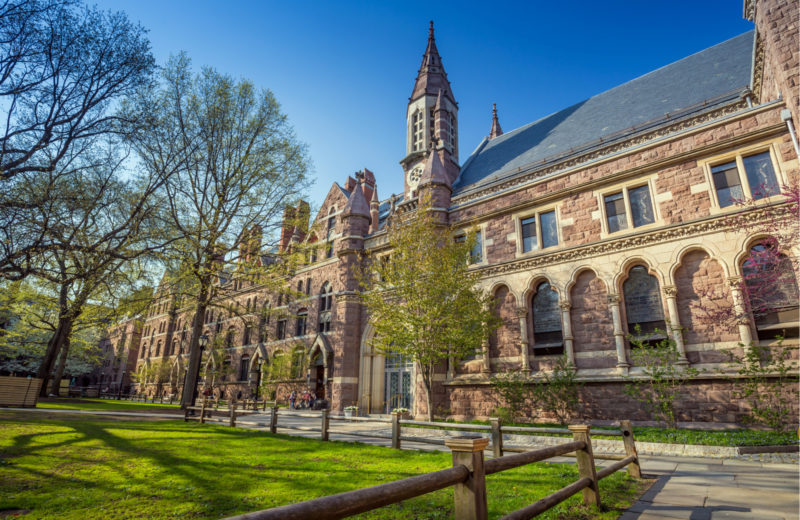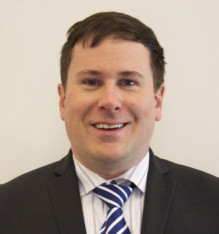The Academic Truce Has Crumbled

In the late 1960s academia, and particularly the humanities, began to embrace a variety of political causes and incorporate them more overtly into their scholarship. This shift coincided with curricular and intellectual developments that re-envisioned the educator as an activist and tasked him with the pursuit of normative scholarship, typically in service of progressive causes or the ubiquitous concept of “social justice.”
While such emphases fell within the traditional protections and safeguards of academic freedom, they also provoked an intense backlash from conservatives who questioned the propriety of using publicly financed and operated institutions to advance radical political activism.
At its peak in the late 1960s, contentious events such as the firing of communist philosopher Angela Davis from UCLA under the pressure of then-governor Ronald Reagan suggested an imminent collision between faculty political beliefs and the public source of their finances, which were ultimately susceptible to public oversight.
Davis, who possessed only a slim body of scholarly work but was well known for radical Marxist activism, was fired, reinstated, and fired a second time by the university’s board of regents over speech that primarily arose from her political agitation.
For its own part, the political left in the academy responded to the conservatives’ backlash by rallying behind academic freedom and free speech. UCLA received numerous public censures for insufficiently safeguarding the academic freedom of a faculty member.
Interestingly enough, both contestants had intellectually consistent and defensible claims behind their positions – up to a point.
Academic freedom is a bulwark of unimpeded inquiry among faculty, yet as institutions drawing public support, universities also operate under the legitimate purview of public scrutiny and must exercise stewardship over the funds they receive.
We may see this tension in place by way of a thought experiment, using an extreme example. Suppose a specific department at a public university began offering a curriculum that espoused a noxious and discredited viewpoint such as eugenic racial theory, or Holocaust denial, and suppose the faculty members who designed it invoked the protections of academic freedom to pursue this viewpoint, even as it elicited a deserved condemnation from students, other scholars, and the public in general.
Depending on the circumstances, tenure might protect the continued employment of the culprit faculty. But would a state legislature be obliged to fund this program with public resources, knowing that it catered primarily to bigots and hate groups?
How about a somewhat related case where a biology department or medical school began spreading pseudoscientific misinformation that carried tangible threats to public health. Anti-vaccination conspiracy theories come to mind. Would the public be obliged to continue financing this program, knowing that it was instructing students with false information that exposed innocent people to dangerous diseases?
Both hypothetical episodes would necessarily invoke the question of the university’s uses of tax dollars, in addition to the concerning content provided in their respective courses. Protections for faculty speech and the constraints of tenure may limit what a university could do in terms of the employment contracts of the individuals involved.
At the same time though, a tax dollar-funded university – as a steward of public resources – would appear to have both a cause and a reasonable expectation to pull the plug on these particular offerings.
Most collisions between problematic content and the public nature of university finance are not as clear cut, and yet it is the murkier cases that test the reach of this tension. Economist James M. Buchanan explained as much in a little-studied essay on the public finance of higher education, written some four decades ago in the wake of the 1960s controversies.
Universities, Buchanan noted, turned heavily toward a public finance model of operation in the mid-20th century that persists to the present day. Wherever one might stand on the optimal level and extent of public funding for higher education, it cannot be denied that their extension invites public oversight into the many uses of the same appropriations – including asking the question of whether a university’s offerings are serving public priorities as expressed through democratically elected bodies.
Indeed, a major premise of publicly funded universities arises from their expected future returns to positive scientific knowledge, innovation, and general education. These scientific and social contributions ostensibly benefit society at large through both tangible advances in knowledge and a more learned populace – or so it is claimed.
Yet as Buchanan notes, these promises become murkier as the university’s offerings shift away from the hard sciences and into the liberal arts and humanities, where knowledge-generation and instruction often takes on deeply normative characteristics. In the areas where activist scholarship has taken root, he continues, it is not uncommon for faculty to behave as though the taxpaying public has “some sacred obligation to throw increasing amounts of revenues over the universities’ ivied walls without so much as a right to inquire what went on behind those walls.”
If left unattended, Buchanan anticipated an “emergent clash between ‘academic freedom,’ as this is defined by scholars behind the ivied walls, and ‘public finance’” of their institutions. If taken to its conclusion, the public legitimately might decide that tax-supported universities “are not fulfilling the objectives for which they are presumably funded” and vote to withdraw funding.
As a result of forcing the question, only two real options emerge. Universities could choose to forgo further public support, allowing “the precepts of academic freedom to be strictly observed” free from any expectation of a return on their previous stewardship of such funds. This would obviously yield a much smaller and less-well-funded university system, but one free from any obligations to voter expectations, whether we deem those expectations warranted or not. Alternatively, the academy could admit that greater public oversight is an unavoidable tradeoff of taking public appropriations.
Buchanan did not endorse either position, save to note that they were the logical ends of the tension between academic freedom and public finance if the two competing aims continued to be pressed against each other.
We are fortunate that the university funding and content disputes of the late 1960s deescalated over the next few decades. The paths they followed were not without fault and exceptions pitting the two objectives against each other continued to plague the debate, but in the 1970s and 1980s the tension largely gave way to something of an informal truce between its main political contestants.
The academic left acknowledged that the unimpeded content freedom it desired for itself also applied to the minority of faculty hailing from other perspectives, including conservatives and libertarians. And the political right largely backed off the strategy of pressuring trustees to rein in the activist excesses of their institutions and curriculum, lest universities face stricter oversight tied to appropriations. The university system settled into a relatively stable distribution of political content. A clear plurality of the faculty leaned left, to be sure, and openly identified as such in surveys. But faculty from the center and right sides of the spectrum also carved out stable minority stakes in most disciplines.
There are many signs today, however, that the truce is crumbling.
Right-leaning faculty (and libertarians are usually lumped into this category for counting, despite its imperfect description) have all but disappeared from the faculty ranks, dwindling to a mere 12% in the latest surveys. Faculty on the left now constitute a clear majority of some 60% of the university system, and much of this growth was driven by an explosion of professors who identify on the far left. The entirety of this observed shift took place after the early 2000s.
It is more difficult to measure the parallel degradation of the political climate on campus, a subject that will have to wait for another day. But suffice it to say that observations to this effect have intensified in the last few years.
Many faculty on the far left no longer extend the academic freedom norms of a few decades ago to their dwindling counterparts on the right, or really any other part of the political spectrum. They impose ideological litmus tests on new faculty hiring, with significant shares of faculty in several disciplines openly admitting to discriminating against candidates with non-left perspectives. They engage in petition campaigns to have disfavored articles withdrawn from publication. Faculty with disliked and minority political perspectives are impeded from hiring and promotion at elite institutions, even when they have comparable or stronger credentials and research records than their counterparts on the left.
Students with non-left political beliefs routinely report feeling pressures to censor their own beliefs on campus. And far-left faculty now routinely launch political crusades against disliked funding sources, aiming to block or control their non-leftist colleagues from even accessing money that is necessary to conduct research, support programs, attract students, or hire new faculty to their departments. Instead, conservatives, libertarians, and really any faculty who hail from outside perspectives are often depicted as intruders on the academic domain who got there through “illegitimate” means and must be blocked or purged from academic life. The paranoid style has come full circle and taken refuge in the illiberal corners of the academic far-left.
Part of this purge mentality is also a response to the glutted academic job market in these same fields, which breeds a way of thinking about faculty jobs as a zero-sum game: if new faculty jobs are scarce relative to the number of job seekers, then we – as humanities faculty of the left – must proactively ensure that they all go to our fellow ideological travelers first.
In short, a growing subset of the academic left has effectively replaced traditional viewpoint liberalism – a perspective that valued free exchange and a diversity of perspectives, even as it maintained its own pluralities – with an echo chamber of hardline progressivism and the academically fashionable realm of Critical Theory.
Not to be outdone, the political right in the United States appears to be responding by turning against higher education itself. Its motives and causes vary, including a growing perception of bias against or persecution of non-left voices on campus. Some of this agitation has taken on a conspiratorial flavor, whereas other dimensions do seem to be grounded in empirical realities. But its cumulative effect is a resumption of pressures to take a closer look at the university’s purse strings.
So far this process has amounted to more talk than action, but we recently saw signs of it at the University of Alaska, which drastically cut back on its funding and degree offerings (although political compromise later softened their severity). Other proposals aim to tie funding restrictions to on-campus free speech policies, or to steer more students into STEM programs, which tend to exhibit a greater political balance among their faculty – or steer away from political content and activism as primary features of their instruction.
It is not my aim to endorse or oppose any of these propositions. Some faculty on the left have responded to them in furious rage, whereas an alarming number of conservative populists seem to relish in dismantling university funding even if done haphazardly and for reasons of ideological retribution. Rather, my point is to note that each response is a predictable reaction to the erosion of the previous truce between a diverse conception of academic freedom and the extension of public funding.
If faculty wish to forestall and reverse budgetary backlash against public investments in higher education, they should not scoff at concerns over the changing and increasingly one-sided ideological climate on campus. Neither should they dismiss the more responsible voices who raise concerns about exclusionary practices and epistemic closure in the most afflicted disciplines.
Forestalling these trends requires a proactive commitment to reestablishing the academic freedom truce of previous decades, as the alternative is a collision between the one-sided political activism of the faculty ranks and the public’s willingness to continue subsidizing careers in the same. Should that collision resume, both sides will likely emerge worse off.
Sources Referenced: Buchanan, James M. “Public Finance and Academic Freedom.” What Should Economists Do (1979).










